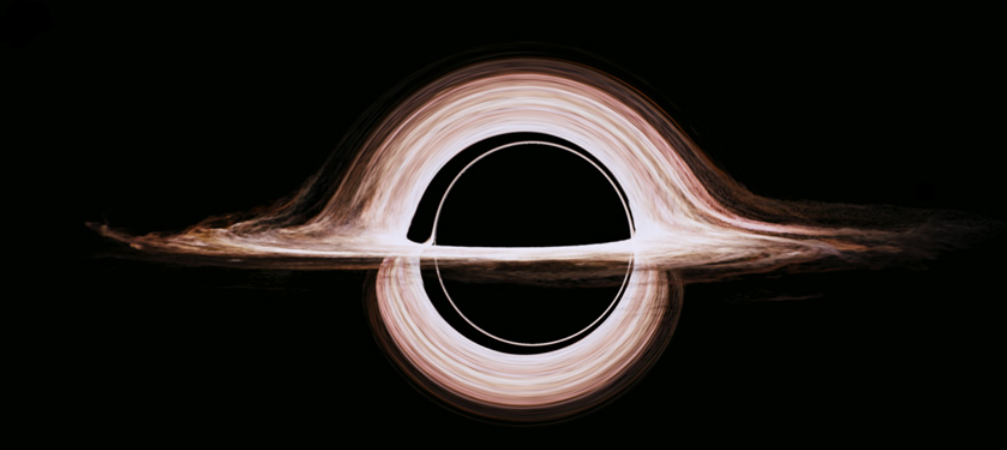One of the many reasons why Interstellar was such a wonderful movie was that it used genuine scientific equations to show what happens in the vicinity of a black hole. But, just like the actors in front of the camera, it seems the black hole also got a little make up to make it more presentable for the big screen.
A new paper, published in the journal Classical and Quantum Gravity by the movie’s visual effects team and its scientific consultant, explains that the original black hole — pictured above — produced by the team’s equations was judged to be a little too confusing for movie-goers. So, eventually, the science was toned down a little.
Kip Thorne from the California Institute of Technology was the scientist who worked with London-based visual effects studio Double Negative on the film’s black hole. Together, they used Albert Einstein’s equations of general relativity to create a simulation — with some tweaks.
Perhaps most understandably, the team modelled the black hole using bundles of light rays rather than individual ones. That, they explain to New Scientist, avoided flickering discontinues, by smoothing out the general appearance of the black hole — and presumably making the cinema-going experience rather less nauseating too.
Elsewhere, the accretion disc — the ring of matter that encircles the hole — was found to warp the shape of the black hole. Turns out that was because the black hole was supposed to be spinning rapidly in the film. The asymmetry made the whole thing look rather confusing, so the team slowed the black hole’s rate of rotation down, making the whole thing look more symmetric and pleasing for cinema goers.
Finally, one quirk was largely a result of taste. Many elements of the simulation were added iteratively, to make the black hole more and more realistic. When it came to including the Doppler effect — correcting the light you see to include frequency shifts induced by the black hole — the whole thing became darker and more blue-tinged. The creative team working on the film favoured the earlier versions, which didn’t include the Doppler corrections — so the black hole is more red-tinged than it would be in real life.
The final black hole created for the film, shown below, is clearly rather different to the one at the top of the page that was deemed too confusing. So, sure, a pure science movie would have looked different. But this was Hollywood, and aesthetic is important. The results may not have quite been 100 per cent accurate — but they sure looked wonderful. [Classical and Quantum Gravity via New Scientist]

Pictures: Double Negative
